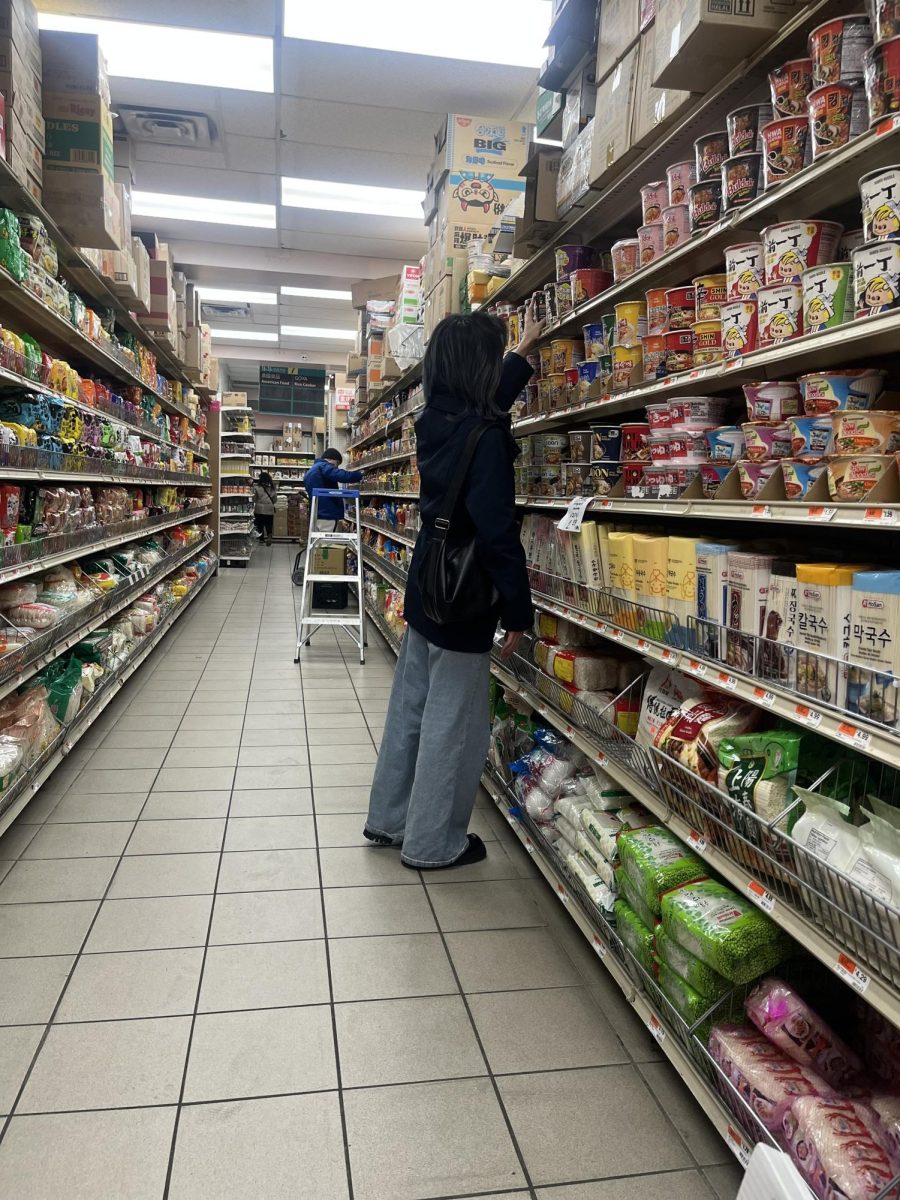
Mickey Ye
Bin Hu, a chronic shopper comparing the prices before and after tariffs at a supermarket near John Dewey.
Economically speaking, the United States of America and its citizens are in a precarious situation. It is well known that we are in multiple crises all at once, and the state of our economy is not improving. The cost of living has gone up greatly, prices of eggs are still expensive, and wages barely cover the cost of living, and for years, our imports have been greater than our exports.
Our economic problems are many, yet these tariffs were implemented for different reasons. According to President Donald Trump, these new terms are to combat the rise of illegal immigrants and the notorious drug trade happening within the United States. Until the crisis is alleviated, the tariffs against the United States’ trading partners won’t be leaving anytime soon.
But what exactly are tariffs?
To put it simply, tariffs are taxes that are levied on goods from abroad.
On March 4th of 2025, President Donald Trump began issuing new policies: to implement tariffs on the top three U.S. trading partners— Canada, Mexico, and China. Trump had imposed a 25% import tax on all Canadian and Mexican goods, as well as increasing tariffs on China from a previous 10% to 20%
Though the numbers may seem low, its impact is high.
To give some examples: Canada: The United States will now be paying more for dairy, lumber, building materials for cars, energy and gas, and for seafood as well. Mexico: The United States will now be paying more for everyday produce and for alcoholic beverages, like tequila and beer. China: The United States will now be paying more for electronics, including laptops, smartphones, furniture, clothing and textiles as well as toys.
With the new tariffs in place, the American economy is bound to be facing economic hardships. Higher tariffs mean higher taxes on imported goods, and this extra weight of money rush will be passed onto the consumers, resulting in a direct increase in the cost of living.
For low-income families, it’ll now be even more of a struggle to get by as the tariffs on Mexico and Canada will roughly cost the American households and small businesses an additional eight hundred additional dollars each year.
“As someone who does grocery runs frequently for my family, I’ve seen the prices of goods go up and down,” Annie He, a student from John Dewey High School, said. “But usually those are small increases and decreases; however, now all I’ve been seeing is prices of once cheap goods inflate at an insane rate. I could barely afford to buy groceries for the week. It’s already hard enough to afford food; now it’s almost impossible.”
The effects of these tariffs are already being felt across various industries. Large businesses and manufacturers who rely on imported components are warning customers of price increases. Take General Motors, estimating that Canadian tariffs alone could add hundreds of dollars to the cost of producing vehicles. And it won’t just be large businesses that will be impacted; small and local businesses will be facing the drawbacks of tariffs as well.
“I depend on affordable goods and imports, but now everything costs more,” Mrs. Zou Feng, a local ninety-nine cent shop owner (5910 Fort Hamilton Pkwy), said. “I’ve always prided myself on selling cheap products. That’s why my customers are loyal to me, but now I am met with an impossible decision. I could either raise prices or take the loss.”
Now this leaves many businesses with a tough choice: either they’ll have to raise the cost of their products to gain even a margin of profits, or they’ll have to bite the bullet and give up on the idea of profiting for the sake of their customers. The unfortunate fact is that tariffs will impact everyone from top to bottom, and no one is spared.
While President Trump justifies these tariffs in order to address illegal immigration and drug trafficking, ordinary American consumers and business owners dealing with the consequences are left to wonder whether or not tariffs are really the most effective measure.
Tariffs may offer short-term solutions to our myriad of problems, but they may very well do more harm than good to the very people they are trying to benefit and protect.
For now, American consumers and businesses can only grapple with the reality of their situation, preparing for the higher prices, which adds yet another challenge to an already difficult economic landscape.
“I’ll adjust and try to get by any way that I can,” says Mrs. Feng. “But I worry about the future; I really do.”